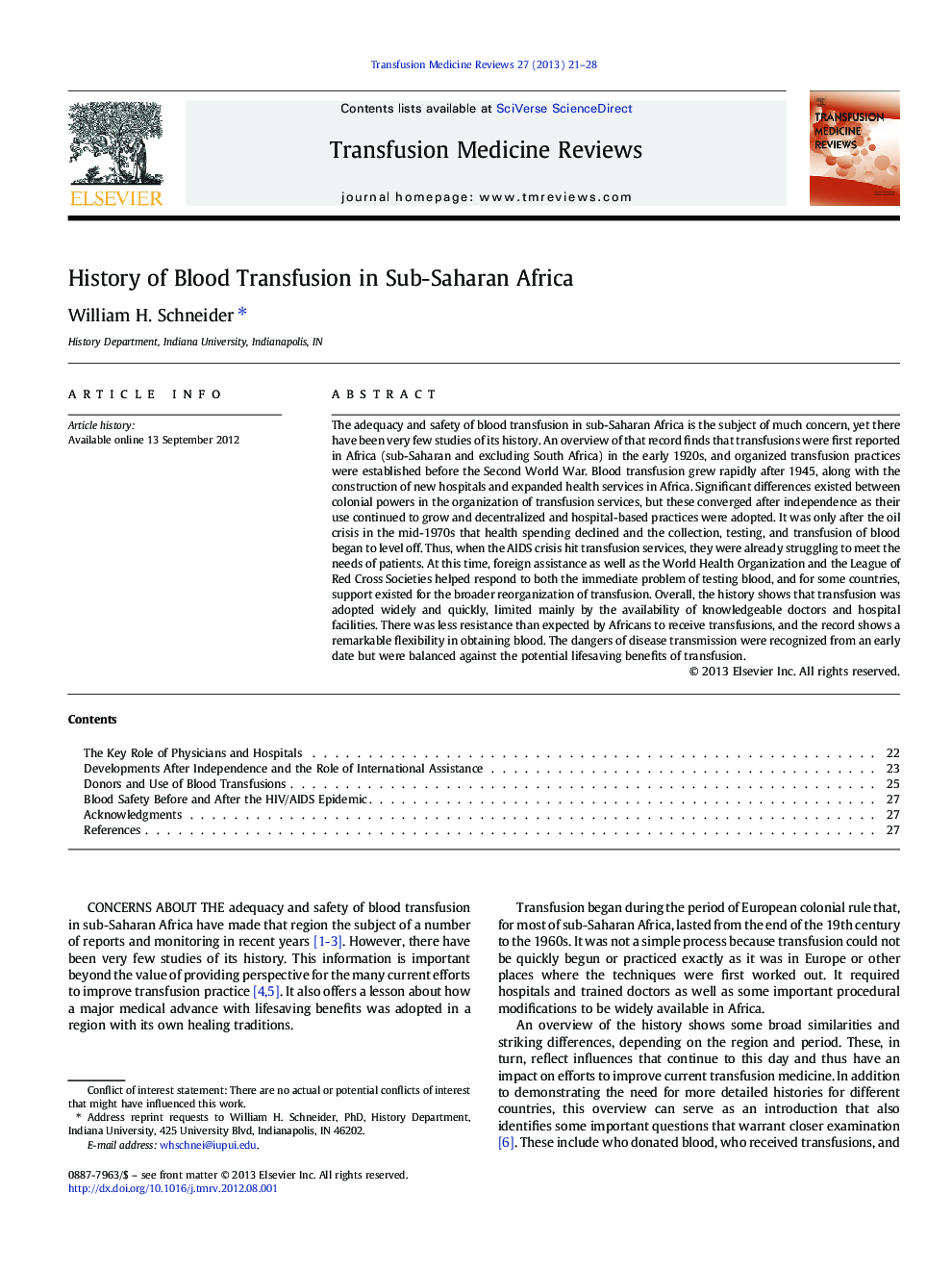| Article ID | Journal | Published Year | Pages | File Type |
|---|---|---|---|---|
| 3336611 | Transfusion Medicine Reviews | 2013 | 8 Pages |
The adequacy and safety of blood transfusion in sub-Saharan Africa is the subject of much concern, yet there have been very few studies of its history. An overview of that record finds that transfusions were first reported in Africa (sub-Saharan and excluding South Africa) in the early 1920s, and organized transfusion practices were established before the Second World War. Blood transfusion grew rapidly after 1945, along with the construction of new hospitals and expanded health services in Africa. Significant differences existed between colonial powers in the organization of transfusion services, but these converged after independence as their use continued to grow and decentralized and hospital-based practices were adopted. It was only after the oil crisis in the mid-1970s that health spending declined and the collection, testing, and transfusion of blood began to level off. Thus, when the AIDS crisis hit transfusion services, they were already struggling to meet the needs of patients. At this time, foreign assistance as well as the World Health Organization and the League of Red Cross Societies helped respond to both the immediate problem of testing blood, and for some countries, support existed for the broader reorganization of transfusion. Overall, the history shows that transfusion was adopted widely and quickly, limited mainly by the availability of knowledgeable doctors and hospital facilities. There was less resistance than expected by Africans to receive transfusions, and the record shows a remarkable flexibility in obtaining blood. The dangers of disease transmission were recognized from an early date but were balanced against the potential lifesaving benefits of transfusion.
